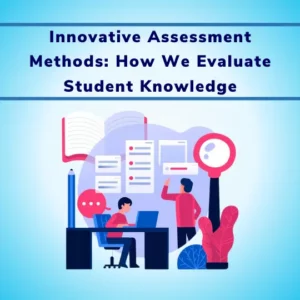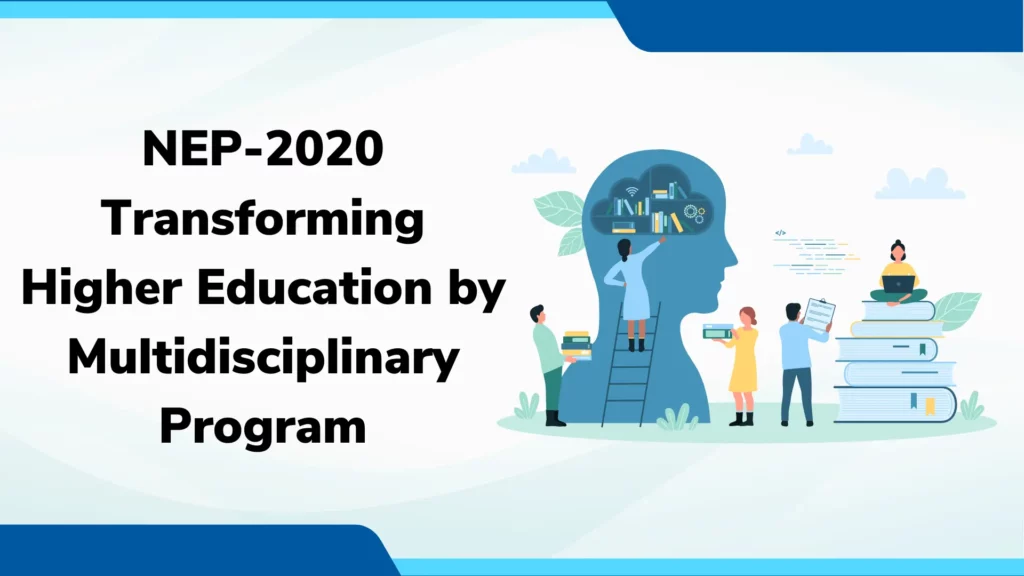
Article Contents
Introduction:
The National Education Policy (NEP) 2020 in India aims to transform Higher Education Institutions (HEIs) into centres of learning that offer multidisciplinary programs.
The goal is to provide students with a comprehensive education that nurtures their overall growth and equips them to tackle the demands of the 21st century, while also keeping them rooted in Indian culture. This article presents a roadmap for implementing the NEP-2020, with a specific focus on Level 4.5-8 multidisciplinary programs offered by universities across India.
These programs will integrate different fields of study, allowing students to explore diverse subjects and gain a broader understanding of knowledge. By embracing multidisciplinary education, HEIs in India can create a nurturing environment that encourages critical thinking, creativity, and problem-solving skills among students. Such an approach will help shape well-rounded individuals who can contribute effectively to society and excel in their chosen professions.
Flexibility and Progression: NEP-2020 in the Indian Education System
Multidisciplinary Degree Program with Multiple Entry and Exit Options under NEP-2020 in the Indian Education System.
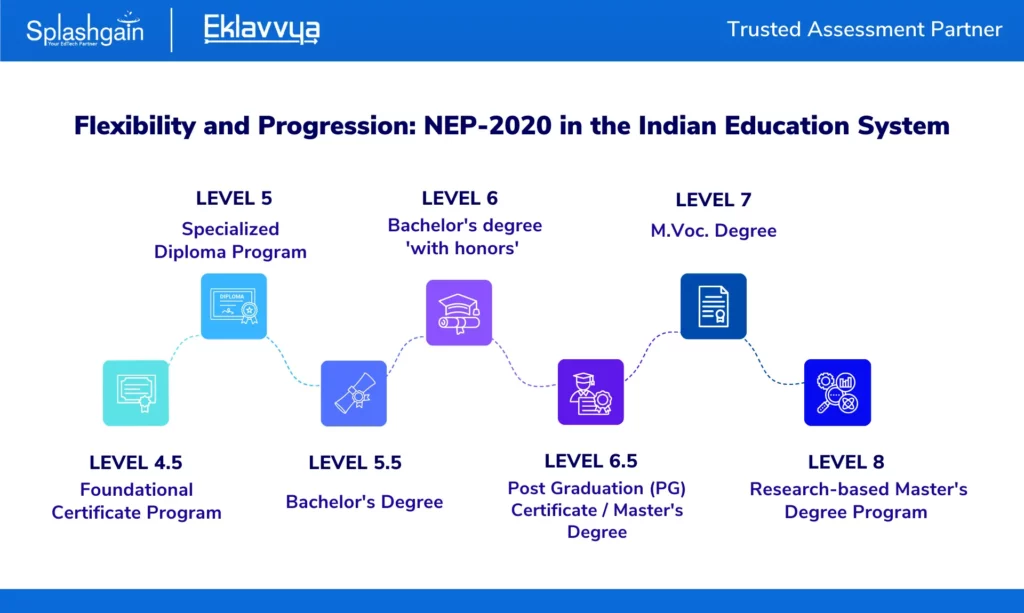
1. Level 4.5: Foundational Certificate Program
Qualification Type: Undergraduate Certificate.
Credit Requirements: 40 credits
Description: This level offers foundational courses to provide students with basic knowledge and skills in their chosen field. Upon completion, students can exit the program with a certificate.
2. Level 5: Specialized Diploma Program
Qualification Type: Diploma
Credit Requirements: 80 credits
Description: Students deepen their understanding and gain practical skills in their chosen field. They have the option to exit the program with a diploma.
3. Level 5.5: Bachelor’s Degree
Qualification Type: Advanced Diploma
Credit Requirements: 120 credits
Description: This level offers advanced coursework and specialized training to further enhance students’ knowledge and skills. Students can exit with a Bachelor’s Degree.
4. Level 6: Bachelor’s degree ‘with honours’
Qualification Type: Bachelor’s Degree
Credit Requirements: 160 credits
Description: Students complete a comprehensive set of courses in their chosen field, building a strong foundation in their discipline. They can exit with a Bachelor’s degree ‘with honours’.
5. Level 6.5: Post Graduation (PG) Certificate / Master’s Degree
Qualification Type: Bachelor’s Degree
Credit Requirements: 120-140 credits
Description: Students continue their studies, exploring additional coursework and specializing further in their field of study.
6. Level 7: M.Voc. Degree
Qualification Type: Bachelor’s Degree
Credit Requirements: 160-180 credits
Description: At this level, students engage in advanced research, complete a substantial project or thesis, and gain an in-depth understanding of their discipline. They can exit with M.Voc. Degree.
7. Level 8: Research-based Master’s Degree Program
Qualification Type: Master’s Degree
Credit Requirements: Additional 40-60 credits on top of Level 7 Degree.
Description: Students aiming for the highest academic achievement in their field undertake advanced coursework, extensive research, and complete a thesis or dissertation to earn a master’s degree.
By offering multiple entry and exit options, this multidisciplinary degree program aligns with the flexibility provided by the NEP-2020, allowing students to acquire recognized qualifications at different levels based on their completed credits and personal aspirations.

Driving Holistic Growth: Implementing NEP-2020’s Vision for a Transformed Educational Landscape in India
As we embark on the implementation of NEP-2020, our focus is on nurturing the intellectual curiosity and holistic growth of students.
The following roadmap will encompass the development of flexible program structures, faculty empowerment through comprehensive training programs, and regular monitoring to drive progress and ensure the successful integration of NEP-2020’s transformative vision into the multidisciplinary educational landscape of India.
1. The Evolution of Higher Education Institutions into Multidisciplinary Hubs
In India, there is a prevalent pattern among higher education institutions (HEIs) where they either specialize in a single field or have rigid disciplinary boundaries. However, the National Education Policy (NEP) 2020 has put forth a significant recommendation to establish large multidisciplinary institutions in or near every district by 2030.
These institutions should not only encompass diverse departments covering multiple disciplines but also offer innovative programs that foster interdisciplinary thinking and enhance students’ overall development.
The UGC Report on ‘Transforming Higher Education Institutions into Multidisciplinary Institutions’ (Sept. 2022) has provided several suggestions for achieving this goal.
One approach is fostering academic collaboration between institutions through HEI clusters, which promotes multidisciplinary education and research in various modes. Additionally, the report proposes merging single-stream institutions with other multidisciplinary institutions, either under the same management or different management, in order to adopt the characteristics of a truly multidisciplinary institution.
According to the NEP 2020, all affiliated colleges should evolve into autonomous degree institutions by 2035.
This can be accomplished by either transforming into large multidisciplinary autonomous colleges or by becoming part of clusters through collaboration with neighbouring institutions. This transformation aligns with the NEP’s vision of an integrated higher education system that encompasses professional, vocational, and multidisciplinary education.
Strategies for Establishing Multidisciplinary Institutions in India
- Merge single-stream institutions with multidisciplinary institutions to adopt multidisciplinary characteristics.
- Transform affiliated colleges into autonomous degree-awarding institutions.
- Create departments for multidisciplinary subjects such as languages, literature, music, philosophy, art, education, mathematics, sciences, sociology, economics, sports, and translation.
- Integrate programs of single-stream institutions with nearby multidisciplinary institutions to enrich offerings.
- Offer integrated programs like B.Sc. MBA, B.A. MBA, and BCom. MBA to provide dual degrees.
- Improve student enrollment and financial resources by becoming part of clusters and offering multidisciplinary programs.
- Contribute to favourable accreditation assessments by clustering colleges.
- Identify research-intensive universities (RUs) and teaching-intensive universities (TUs) in each district.
2. Driving Transformation: Key Result Areas and Performance Indicators for NEP-Compliant HEIs

a) Institutional Development Plan
To align with NEP 2020, HEIs should develop an Institutional Development Plan (IDP) that encompasses various aspects such as curricular improvement, classroom transaction quality, human resources assessment, infrastructure requirements, ICT technology, learning facilities, CPD (Continuous Professional Development), student support, and teaching infrastructure.
Strategies for Institutional Development Planning
- Incorporation of long-term, medium-term, and short-term goals in the IDP.
- Setting goals for educational and research outcomes, quality parameters, equity and inclusion considerations, and financial support.
- Regular measurement of progress in achieving the IDP goals.
- Utilization of the IDP as a basis for funding support and graded accreditation.
- Adherence to NEP 2020 guidelines and principles in the IDP formulation.
- Focus on continuous improvement and adaptability in the IDP to meet changing educational needs and demands.
- Collaboration with stakeholders and experts in the IDP development process.
- Monitoring and evaluation of IDP implementation to ensure effectiveness and desired outcomes.
b) NAAC Accreditation, Academic Audit, and IQAC
The NAAC accreditation is a voluntary and comprehensive process that involves a rigorous assessment of various aspects such as infrastructure, teaching-learning processes, research output, governance, student support services, and overall institutional performance.
The Internal Quality Assurance Cell (IQAC) is a post-accreditation quality sustenance measure recommended by the NAAC. It is a committee established within an institution to monitor and ensure continuous improvement in the overall quality of education and academic processes.
Strategies for Ensuring Quality Assurance in Higher Education
- Academic audits will assess the quality of academic programs, teaching-learning processes, research output, and student support services.
- Audits help identify areas for improvement and provide recommendations for enhancing institutional effectiveness and efficiency.
- Non-accredited affiliated colleges should be motivated to seek accreditation.
- The IQAC will assist in preparing the institution for accreditation by coordinating data collection, documentation, and compliance with accreditation criteria.
- Regular administrative and academic audits should be conducted in accordance with UGC norms.
HEIs should encourage non-accredited affiliated colleges to seek accreditation, and colleges with NAAC A Grades should be encouraged to become autonomous. Establishing an Internal Quality Assurance Cell (IQAC) as a post-accreditation quality sustenance measure is crucial. The IQAC should work towards improving the overall performance of the institution and developing a system for consistent improvement.
c) Registration at ABC and NHEQF Aligned Programme Design
HEIs offering multidisciplinary programs with multiple entry and exit options should register at the ABC (Academic Bank of Credits). This registration enables acceptance of multidisciplinary courses, credit transfers, and credit acceptance.
The curricula of all disciplines and fields should align with the National Higher Education Qualification Framework (NHEQF), which outlines the learning outcomes associated with certifications, diplomas, and degrees.
Strategies for Aligning with NHEQF and Registering at ABC
- HEIs registered at the ABC can facilitate the acceptance of credits earned by students from different disciplines and fields.
- Registered HEIs reduce the need for students to repeat similar coursework when switching fields of study or transferring to another institution.
- ABC registration promotes flexibility and mobility in higher education.
- Registration at the ABC provides students with more options to tailor their educational journey according to their interests and career goals.
- HEIs should align their curricula with the NHEQF to ensure quality and comparability of qualifications.
- Alignment with the NHEQF ensures that HEIs offering multidisciplinary programs meet the required educational standards.
In summary, registration at the ABC and alignment with the NHEQF are essential for HEIs offering multidisciplinary programs with multiple entry and exit options. These measures promote credit transferability, facilitate flexible educational pathways, and ensure the quality and comparability of qualifications within the higher education system.
d) Internationalization of Education and Office of International Affairs
Higher education institutions (HEIs) should make the internationalization of education a priority. This means they should work on creating partnerships, collaborations, and exchange programs with international schools.
To make this happen smoothly, HEIs can set up an Office of International Affairs. This office will help coordinate and support these efforts, encouraging students and teachers to have a global perspective.
Support from Embracing Global Education
- The office will manage administrative tasks related to international partnerships and support students in the application process for studying abroad.
- The Office of International Affairs will provide information about available opportunities and offer assistance to students during their time abroad.
- The office can also support teachers in their international collaborations by helping them find funding, navigate administrative procedures, and provide resources.
- Collaborations with international schools can include joint research projects, exchange programs, and dual degree programs.
- International collaborations expose students to different cultures and perspectives, contributing to their personal and professional growth.
By establishing an Office of International Affairs and focusing on internationalization, HEIs can help students and teachers develop a global mindset. This will prepare them to thrive in our interconnected and diverse world.
e) Offering of ODL and Online Programs
Higher education institutions (HEIs) should use online learning to help achieve the goal of enrolling 50% of students by 2035, as stated in the National Education Policy (NEP) of 2020.
Support from ODL and Online Programs
- Provide online courses recognized by the University Grants Commission (UGC).
- Utilize platforms like SWAYAM to offer online courses.
- Support multidisciplinary education through online learning initiatives.
- Track the number of students completing Massive Open Online Courses (MOOCs) and SWAYAM courses as part of their degree requirements.
- Ensure the availability of necessary physical infrastructure, such as computer facilities and libraries, to support online learning.
f) Offering Professional Courses in Indian Languages
Promoting professional courses, especially technical ones, in local languages can enhance access and inclusivity. The number of courses offered in local languages can be a KPI to measure progress in this area.
Efforts should also be made to research, preserve, translate, and study manuscripts in classical languages and dialects to enrich the understanding of Indian languages and their interrelation with other subjects.
Strategies for Promoting Professional Courses in Indian Languages
- Collaborations between language experts and professionals to develop course materials and resources in local languages.
- Providing training and capacity-building opportunities for faculty to deliver professional courses in Indian languages.
- Enhancing access to professional education by removing language barriers and promoting multilingualism.
- Recognition and accreditation of professional courses offered in local languages by relevant authorities.
- Creating awareness among students, parents, and policymakers about the value and importance of professional courses in Indian languages.
- Encouraging industry participation and support for professional courses in local languages to enhance employment opportunities for students proficient in those languages.
- Developing comprehensive language policies and frameworks within educational institutions to support the offering of professional courses in Indian languages.
g) Embedding IKS in Curriculum
HEIs should integrate Indian Knowledge System (IKS) into their curriculum by offering courses or modules that focus on IKS. The number of courses or modules on IKS can serve as a KPI. Incorporating IKS will help promote a comprehensive understanding of Indian culture, traditions, and knowledge systems.
The number of courses or modules on IKS can serve as a key performance indicator (KPI) to track progress. By incorporating IKS, HEIs can provide students with a well-rounded education that encompasses diverse aspects of Indian heritage.
Support to HEIs through the Inclusion of IKS in Curriculum
- Encouraging research and scholarship in IKS to contribute to the advancement of knowledge.
- Collaborating with experts and scholars in IKS to develop and deliver high-quality courses.
- Providing opportunities for experiential learning and practical applications of IKS.
- Promoting the preservation and documentation of indigenous knowledge systems within IKS.
- Engaging with local communities and practitioners of IKS to bridge academic and traditional knowledge.
- Recognizing and valuing the contributions of IKS in shaping India’s cultural and intellectual heritage.
h) Establishment of Research and Development Cell (RDC)
Higher educational institutions (HEIs) are encouraged to set up a Research and Development Cell (RDC) with the aim of fostering a culture of research and innovation. The RDC serves as a dedicated unit responsible for promoting and supporting research activities within the institution. By establishing an RDC, HEIs can enhance their growth and progress.
Support from RDC to HEI
- Tracking total research grants received from government and private organizations.
- Reflects recognition and support for the institution’s research projects from external sources.
- A number of active start-ups were nurtured and supported by the HEI’s Incubation Center.
- Showcases the institution’s ability to translate research outcomes into practical and innovative solutions.
- Provides a platform for entrepreneurial ventures.
- Encourages faculty and students to engage in cutting-edge research.
- Build a collaborative ecosystem involving academia, industry, and the community.
- Fosters innovation and contributes to societal development.
i) Offering Apprenticeship/Internship Programs, Employability Initiatives, Alumni Connect, and Industry-Institute Linkage
HEIs should incorporate apprenticeship/internship programs, on-job training, and field projects as part of their academic programs. KPIs can include the number of academic programs offering internships/apprenticeships, the percentage of the curriculum with skill/vocational courses, the percentage of graduating students placed through the Placement Cell, and the number of industry-institute linkages established through MoUs.
Strategies for Bridging the Gap and Strengthening Connections
- Engage actively with domestic and international alumni.
- Collaborate with industries for apprenticeships, internships, research, entrepreneurship, and employment opportunities.
- Focus on employability and skill development among students.
- Give special attention to ST/SC, differently-abled, and minority groups.
- Set Key Performance Indicators (KPIs) to measure progress, such as-
- The number of programs offering internships/apprenticeships.
- Percentage of the curriculum with skill/vocational courses.
- Percentage of graduating students placed.
- The number of industry-institute linkages established through MoUs.
3. Empowering Governance and Infrastructure for the Digital Age
Enhancing the governance and infrastructure of Higher Education Institutions (HEIs) is crucial for their success in today’s rapidly evolving academic landscape. To keep pace with societal needs, global trends, and advancements in knowledge, HEIs must adopt a more autonomous, accountable, decentralized, and transparent internal governance structure. A flexible governance pattern that can adapt to changing circumstances will be instrumental in accelerating progress.
With the internationalization of education and increased competition due to globalization, HEIs need to be managed with a higher level of professionalism. To effectively navigate the complex academic environment envisioned in the NEP-2020, every University and College must establish a robust governance mechanism.
Strategies for Advancing Governance and Infrastructure
- Augment IT infrastructure and leverage technology for educational planning, teaching, learning, and administration.
- Develop software for inclusivity, e-content in regional languages, virtual labs, and digital tools.
- Digitize administrative processes for the smooth operation of the Multidisciplinary Degree Program.
- Leverage emerging technologies like AI to offer personalized learning experiences.
- AI-based learning platforms for tailored training, rich content, adaptive quizzes, and interactive simulations.
- Enable remote, self-paced learning anytime and anywhere.
- Facilitate individualized learning processes for improved understanding and outcomes.
- Provide targeted guidance and support to students based on their strengths and weaknesses.
The digital revolution and the use of Information and Communication Technology (ICT) have opened up new possibilities in the delivery of higher education. Leveraging ICT and emerging technologies like Artificial Intelligence (AI) can offer promising career opportunities for socially and economically disadvantaged groups. AI, in particular, has the potential to drive innovation in the education sector. The global AI in education market is projected to reach $3.68 billion by the end of 2023.
4. Student-Centric Initiatives for Inclusive Education
Institutions must embrace a holistic approach to student development, creating robust internal systems that provide support in both academic and social domains. This entails fostering an environment that promotes sports, cultural activities, extracurricular pursuits, and an engaging curriculum, as envisioned by NEP 2020. HEIs should establish mechanisms and funding opportunities for topic-centred clubs and activities organized by students, with the guidance of faculty and experts.
Strategies for Nurturing Inclusive Education
- Foster an environment that promotes sports, cultural activities, and extracurricular pursuits.
- Seamlessly integrate co-curricular courses into the curriculum.
- Provide faculty members with training to mentor and guide students beyond traditional teaching roles.
- Establish high-quality Learner Support Centers and academic/career counseling systems.
- Address students’ physical, psychological, and emotional well-being.
- Improve infrastructure to support holistic student development.
- Establish a dedicated monitoring and evaluation cell to assess the efficacy of initiatives.
- Employ data-driven methodologies to identify gaps and propose new missions for inclusivity.
- Create an Equal Opportunity Office at both the apex and HEI levels for equitable education.
In the realm of education, student-centric initiatives play a pivotal role in fostering inclusive policies.
As Maharashtra’s Task Force for Implementation of NEP 2020 has put forth a groundbreaking proposal: Accelerating the Movement towards Ensuring that ‘No One is Left Behind.‘
To execute this vision, the task force recommends the establishment of a dedicated cell for continual monitoring and evaluation, employing data-driven methodologies to assess the efficacy of initiatives, identify gaps, and propose new missions to advance inclusivity.
Such strategies and approaches will help the state universities to work on the path of successful implementation of NEP. Furthermore, the creation of an Equal Opportunity Office at both the apex and higher education institution (HEI) levels will serve as a catalyst for equitable education.
5. Enhancing Faculty Skills for Multidisciplinary Education
In order to successfully implement multidisciplinary degree programs that incorporate internships, community service, engagement, and skill courses, it is crucial to provide comprehensive orientation and support for teachers.
Faculty members need to be equipped with the necessary skills to effectively teach, train, and conduct research in multidisciplinary academic programs. It is essential to prioritize capacity-building initiatives for faculty, utilizing programs like the Annual Refresher Programme in Teaching (ARPIT) to enhance their capabilities further.
Additionally, institutional structures must be expanded to strengthen faculty capacity in employing effective pedagogical approaches and designing innovative learning assessment methods and tools.
According to section 13.1 of the National Education Policy (NEP) 2020, the quality and engagement of the faculty are the most critical factors for the success of higher education institutions. Likewise, section 15.1.1 emphasizes the significance of teacher education in cultivating a pool of educators who will shape the next generation.
Strategies for Preparing Teachers for Multidisciplinary Programs
- Expand institutional structures to strengthen faculty capacity in effective pedagogical approaches.
- Design innovative learning assessment methods and tools to evaluate multidisciplinary graduates.
- Empower teachers with knowledge and openness to embrace new assessment approaches.
- Integrate multidisciplinary perspectives, knowledge, and values in teacher preparation.
- Foster practice under the guidance of excellent mentors.
- Ground teachers in Indian values, languages, knowledge, and traditions.
- Keep teachers well-versed in the latest advancements in education and pedagogy.
By prioritizing faculty support and training, we can ensure that teachers are adequately prepared and equipped to deliver quality education in multidisciplinary settings.
This will enable them to effectively nurture students’ individualized learning journeys while staying abreast of emerging educational approaches. Ultimately, empowering teachers will contribute to the overall success of higher education institutions and the holistic development of future generations.

Conclusion
In conclusion, implementing NEP-2020 in Higher Education Institutions (HEIs) requires careful planning and execution.
The roadmap outlined here focuses on key areas for transformation. HEIs should create a comprehensive Institutional Development Plan (IDP) to guide the implementation process. Accreditation from NAAC and regular academic audits will ensure quality education.
Registering at the Academic Bank of Credits (ABC) and designing multidisciplinary programs aligned with the NHEQF will offer flexible learning options for students. Internationalization, online programs, and Open and Distance Learning (ODL) will broaden educational opportunities. Offering professional courses in Indian languages promotes inclusivity and better engagement.
Embedding Indian knowledge systems in the curriculum fosters a holistic understanding of cultural heritage. Establishing Research and Development Cells (RDCs) will encourage innovation and collaboration. Apprenticeship/internship-embedded degree programs and industry collaborations will enhance employability.
Governance reforms and infrastructure upgradation are necessary for a good learning environment. Student-centric initiatives and support systems ensure inclusive education. Implementing this roadmap will transform HEIs into multidisciplinary centres of learning. This transformation aligns with NEP-2020’s vision of holistic education.
Multidisciplinary programmes in higher education promote cross-disciplinary learning, encourage holistic development, foster critical thinking and problem-solving skills, and prepare students for the complex challenges of the modern world.
Institutions can implement multidisciplinary programmes by revising their curriculum, fostering interdisciplinary collaboration among faculties, establishing dedicated centers of excellence, and providing ample research opportunities.
Challenges may include resistance to change, lack of faculty training, infrastructure constraints, coordination among multiple disciplines, and ensuring the quality and relevance of the programmes.
Technology can support implementation by providing online learning platforms, virtual collaboration tools, access to research databases, and resources for remote learning, thereby facilitating interdisciplinary interactions and knowledge sharing.
Institutions can ensure faculty readiness through training programs, workshops, seminars, and conferences to enhance their interdisciplinary knowledge, teaching methodologies, and research skills.


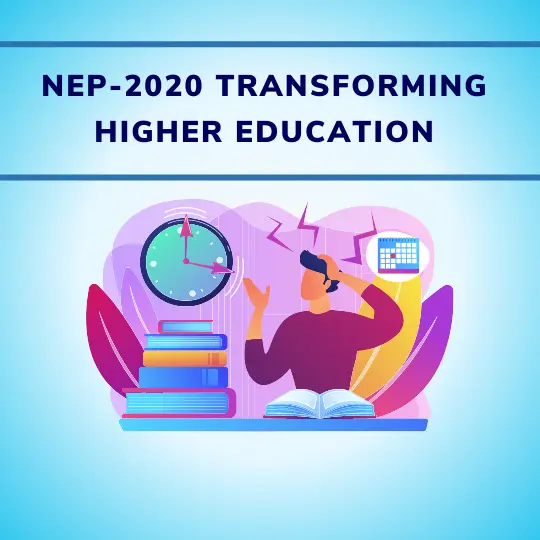
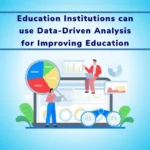
![How Government-Led Exams at 250+ Locations Are Setting New Standards of Integrity [Case Study]](https://www.eklavvya.com/blog/wp-content/uploads/2024/04/Enhancing-Exam-Integrity-Government-Certification-in-250-Locations-150x150.webp)
![Transforming Central Govt. Exams Evaluation: How Onscreen Marking is Leading the Charge [Case Study]](https://www.eklavvya.com/blog/wp-content/uploads/2024/04/How-Onscreen-Marking-Revolutionized-Central-Govt-Exams-Case-Study-1-150x150.webp)
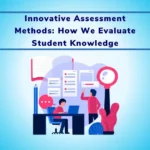



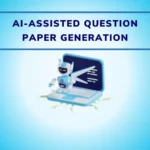





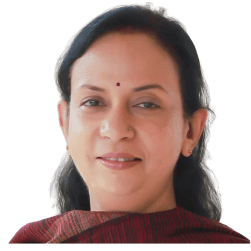


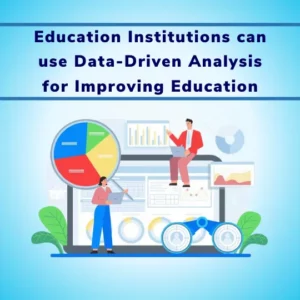
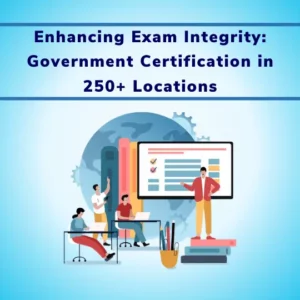
![How Onscreen Marking Revolutionized Central Govt Exams [Case Study]](https://www.eklavvya.com/blog/wp-content/uploads/2024/04/How-Onscreen-Marking-Revolutionized-Central-Govt-Exams-Case-Study-1-300x300.webp)
